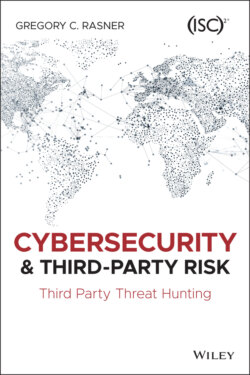Читать книгу Cybersecurity and Third-Party Risk - Gregory C. Rasner - Страница 16
Compliance Does Not Equal Security
ОглавлениеCompliance is not security, yet security is an important piece of compliance. By definition, being compliant is when your organization meets the minimum requirements for specific regulations at a specific moment in time. If we look at many of the companies on the recently breached list, it's likely all were meeting their regulatory obligations for compliance in their respective industries. In the case of Target when its payment system was hacked, it had just completed a certification of its PCI‐DSS. Most regulations are simply a form of deterrence (of things like insider trading or dumping chemicals into a river). Regulations discourage bad behavior either by people or companies.
Security is an ongoing activity—a continuously occurring activity and not one that occurs at a point in time. Compliance activities are performed as a checklist by internal or external auditors to verify that a company's team is following regulations. It's is an important activity that helps prevent bad acts. Employees and companies see these checks being performed, then are discouraged from doing bad things, such as ill‐gotten gains via insider trading or killing fish by dumping chemicals. Security has the dubious distinction of being sure data is not lost. Once data is lost, it cannot be retrieved—it is gone forever into the Dark Web or other places. The deterrent must come from the company's cybersecurity efforts, not the government regulators.
A company can be 100‐percent compliant and also be 100‐percent owned by hackers. For example, you can drive a car with seatbelts, an automatic brake system (ABS), collision detection and avoidance, blind spot detection, and more, all turned on. Say your car is up to current safety regulations, you, the driver, are all buckled up and sober. There should be no accidents or injuries. Yet, another driver who doesn't always pay attention to the safety warnings fails to perform their best practices while driving, resulting in a collision with injuries. You, a driver, were 100‐percent compliant, yet another driver was not.
Another difference in compliance activities is the timing of each action. Compliance activities are done at a certain point in time for what is present in terms of controls and checks. Another third party (i.e., auditors, regulators) or an internal team ensures that the company they're working with satisfies a set of requirements that allows it to continue to perform business. When all conditions have been satisfied, the compliance activity is finished. Security, however, is never finished. It is continually monitored, reviewed, and improved.
